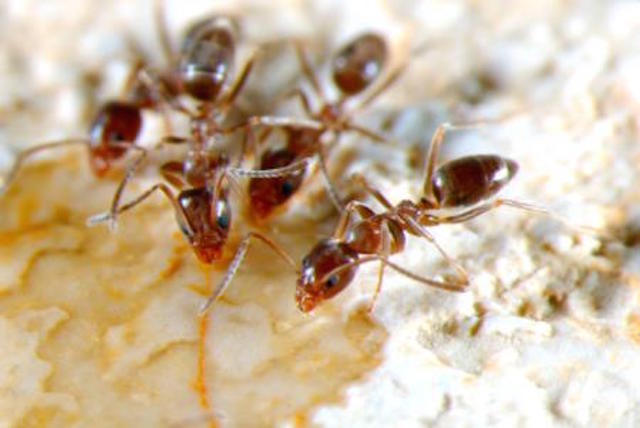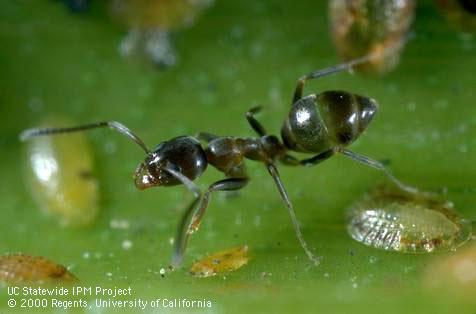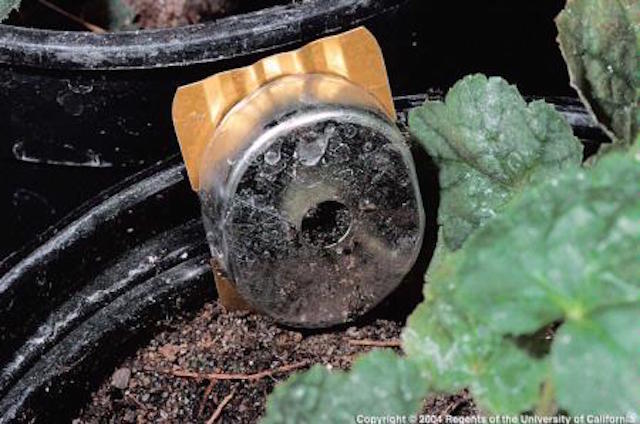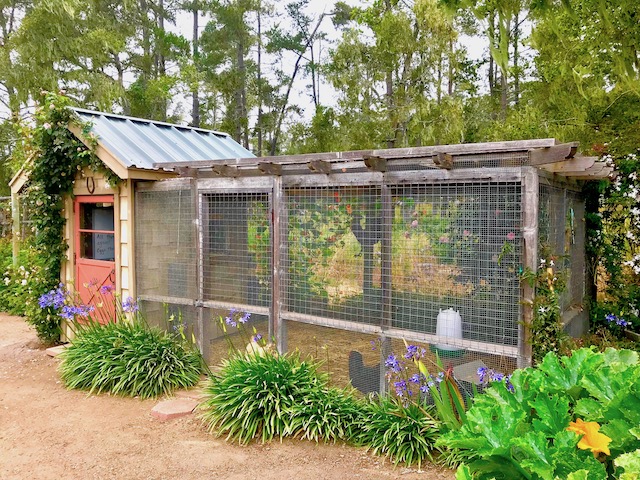
Those pesky little black ants have been around the house and in the garden, kitchen, and bathroom all summer. They’re looking for sweets and water. They come in when it’s hot; they come in when it’s wet. They crawl up the stems of plants to care for their “herd” of aphids. They use the aphids to provide food for their young.
There are hundreds of different varieties of ants that hang out in and around our homes. Most varieties are quite harmless and even considered beneficial because they feed on fleas, termites, and other soft-bodied insects. The Argentine ant first invaded North America as a “stowaway” on coffee boats from South America.
The Argentine ant is the common variety that you see walking in a line, carrying bits of food that will help sustain its colony. If you’ve flooded an area that houses an underground ant nest, you’ll see them carrying small white eggs to safety. The Argentine ant loves sweets and sometimes proteins, lives in nests underground, is about 1/8 inch long and brown in color.

The Argentine ant is NOT native and is not considered beneficial. It protects plant pests like aphids, a “plant sucking” insect. They harvest the aphid “honeydew” (a sweet name for excrement) for food supply. Honeydew often leads to ugly sooty mold you find on plants and even on outdoor furniture. Get rid of the Argentine ants and you get rid of “sooty mold”.
Trails of ants traveling up the stems of shrubs, tree trunks, and hummingbird feeders, can be treated safely with a product such as “Tanglefoot”. It’s a sticky substance applied to the stem or trunk of a tree or shrub that ants will not cross.
There are no magic tricks for removing Argentine ants from your property. You probably shouldn’t even try to eliminate them from your entire outdoor area. You’ll want to keep them out of the house for sanitary reasons and for your peace of mind. Exclude them by caulking holes and cracks in the foundation and wooden structures. Store food, especially sweets and protein like dog food in airtight containers. Do not use insect sprays near food items. Wipe ants up with soapy water or diluted vinegar.

For reducing the number of outdoor Argentine ant colonies, use “baits”. Baits are the only tools recommended by Master Gardeners for managing ants. Bait contains poisons that are mixed with a bit of food that is taken back to the colony to be fed to larvae, and to the queen. According to UC Pest Notes, “Several refillable bait stations are available including the Ant Café, Antopia, Ant-No-More, and KM AntPro. The University of California research with the KM AntPro dispenser has shown that it can be effective when properly installed and maintained outside the home.”
With a little effort we can keep critters, both large and small, at bay and enjoy our gardens and out-of-doors this summer. Keeping tiny pests like ants out of your home and off your plants will take a bit of patience and persistence, but it will make your summer so much happier.
Home-made formula for getting rid of ants outdoors:
Boric acid is a great, natural ant killer. It poisons them from the inside in much the same way that diatomaceous earth does.
Most ants will take some of the boric acid-laced bait back to their colonies where other ants will ingest it and die, allowing you to effectively kill off whole colonies without much effort on your part.
The only downside is that while boric acid is not toxic – it can be harmful if consumed or inhaled by pets so avoid using boric acid-based ant traps in places that your pets can reach.
Now that you know what’s up – here’s how to make a simple boric acid and sugar homemade ant trap, courtesy of CreekLineHouse.com.
Simply mix 1 cup of sugar, 1/2 cup of water and 1 Tablespoon of Borax. Place the solution in an old plastic container and poke holes in the lid so the ants can get in or use an empty soda can.
Be sure that wherever you place the poisons and bait, it cannot be reached by pets who may have a sweet tooth.


